A League of Binary Stories
Boston-based photographer Karen Jerzyk’s images are like shadows coming to life in all their invisible beauty, nuanced telling and subtle luminosity, giving it an equal footing with its origins, and giving us narratives that resonate with something old, something deep and something visceral to life
Praveena Shivram
One of the exercises I did with Karen Jerzyk’s images was to come up with stories for each of them. It was like my very reluctant muse had suddenly found wings and was zipping all over the place like a balloon deflating its way to its original self. The exercise, predictably, was addictive. The stories, themselves, were not. They came and went like flashes of lightening cutting through darkness with the power of its unpredictability and the intensity of its fervour and I realised, here was the other side of the story, the other side of creation, the dark side, if you must.
Yoda (but, of course) from the Star Wars movies famously said, ‘Fear is the path to the dark side. Fear leads to anger, anger leads to hate and hate leads to suffering’. With Karen’s work, it felt like maybe here was another Yoda, sitting just as sedately, his ears pointing to either side just as modestly, his words falling around him just as gracefully, saying, ‘Beauty is another path to the dark side. Beauty leads to thought, thought leads to memory, and memory leads to experiencing’. In Karen’s work, dark was the new normal, and dark was about going beyond the sinister or the ominous to embrace the quietude of suffering that made it rich, that made it conscious, that made it indispensable. She once described her works as ‘dark fairy tales’ and in my mind that phrase somehow captured the limitlessness of possibilities teeming inside her photographs and the limiting, physical structure within which they exist. ‘I had used the term loosely a few months back on a post I had made. They’re not based on any existing fairytales. Rather, I find that sometimes image-wise I try to incorporate elements of dark fairy tales. I like it when an image seems darkly ironic, or psychologically displeasing. A lot of fairytales are. They’re just an intensified version of true life,’ she said over an e-mail interview.
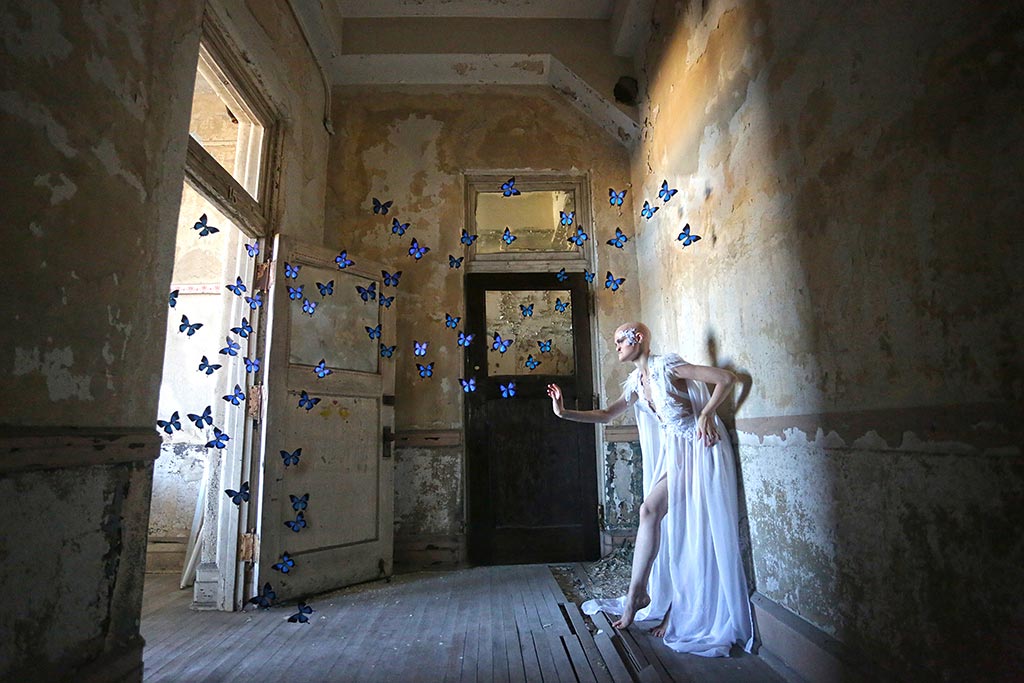
Karen’s work as a photographer came into its own with her ‘abandoned buildings’ project, where she used abandoned spaces as the compelling foundation on which her visual narratives were built, but my favourite remains her ‘Colours’ series, where the same space is re-imagined every single time based on the colour. The dark and the surreal merge with such unconscious abandon (pun unintended) in her images that they read more like an explosion of emotion rather than subverted imagery. ‘Because my work comes from an immediate place of loss and is a visually true and raw depiction of my struggles (my father passed away unexpectedly in 2011), I feel that people who have also suffered any sort of loss or feelings of alienation immediately identify with my work. What I do is a culmination of years of untold darkness that I never quite knew how to channel until the death of my father. When that happened, I saw the world differently. I was lost, but also changed. Something changed. As if everything came to a head and exploded. All of a sudden I knew how to show the emptiness of loss. The naked embarrassment of being made fun of in class. The feeling that, no matter where you go, you are not wanted and do not belong. Constant ugliness from others. Everything seems ugly. You, others, the world. But then, sometimes, there’s this one day you wake up and the light outside is just right, you hear the right music, someone says the right things to you…everything seems right. And you realise that through all this blackness there are moments that are so beautiful that every negative thought is crushed by the purity of that day – I think that is what people hold on to when they look at my work, especially if they have emotionally been there themselves.’
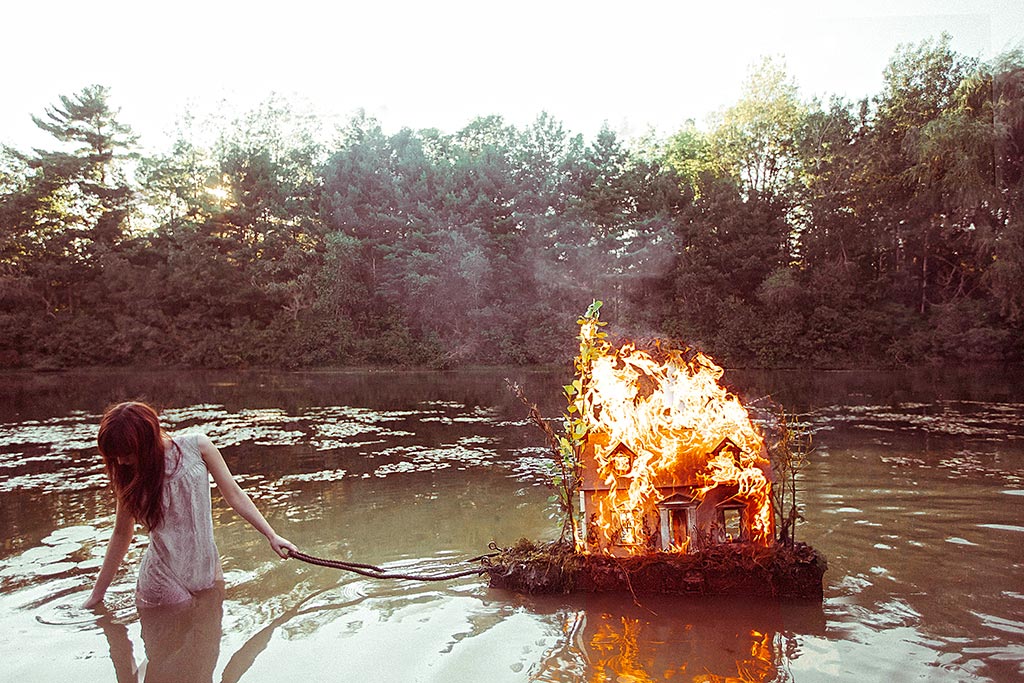
Excerpts from the interview
There is a thin line between life and death, as there are between most binary opposites, and yet it is ingrained in our perceptions that we need to choose one and stick to that side. And in your images, those perceptions are turned on their heads. How do you stay rooted within these shifting perspectives that you bring into your images?
Most of us have lived through the surreal moments of tragedy. It’s a shock to the system, although everything happening to you is real. It’s almost an out-of-body experience. Then you have dreams – that moment right before you sleep, where hallucinations sometimes happen, the moments you’re sleeping and dreaming, and the moment between sleep and wakefulness (where, again, reality can be skewed). Or, have you ever not been able to differentiate between a dream or something that happened in real life? I’m a person who has a lot of blurred lines. I don’t know, does that make me mentally ill? Maybe. Is it normal? I’m not sure. All the blurred lines are a reality to me, so it’s easy for me to amplify that in my work. Sometimes I dream of people I’ve lost and they have such a frail, bright aura. I wake up and swear I was where they were. It’s important to remember those feelings. I try to write them down as often as possible, to remember. I don’t think we ever get too old to expand emotions, and by writing down new experiences and feelings (mostly from dreams) I am able to feel that again. We all circle through dreams, life and death. It’s inevitable. I like to layer those elements, to get a feeling of all three at once. And because I have not died, I can only speculate (multiple times, daily) on what it’s like, which is where I think some of the imagery of fear comes in.
I spend hours in a day trying to wrap my mind around a general purpose for us being here, and the connection between consciousness, unconsciousness and death. What is the reality between the three? Do any of us truly know?
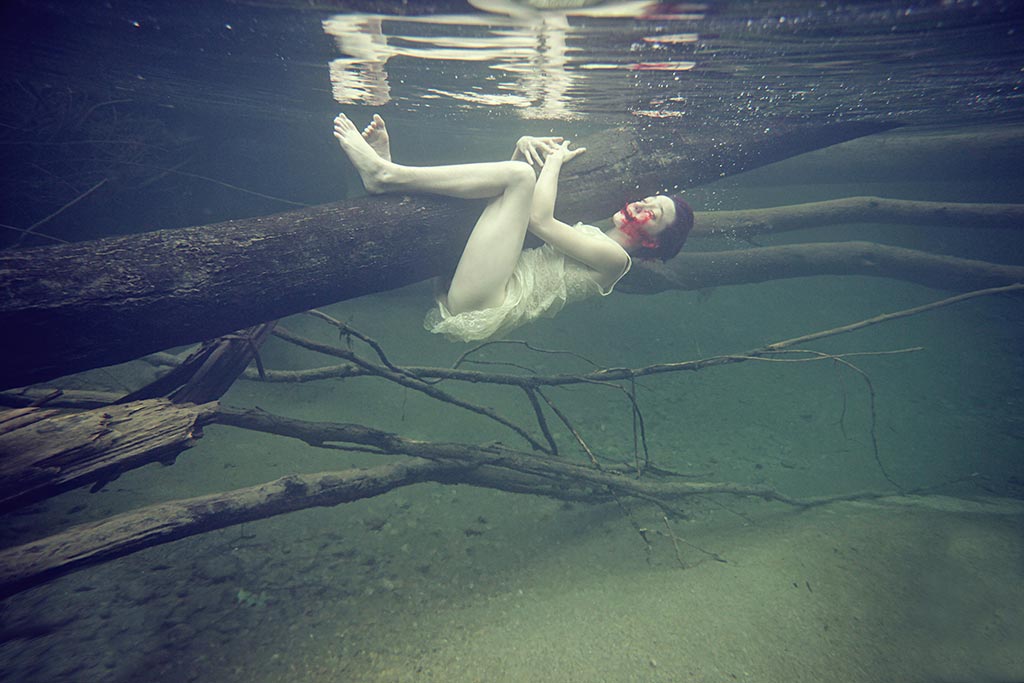
Your relationship with abandoned buildings, that you describe as a “wonderful start of a marriage with finding cool locations” is perhaps the best melting pot of the past, present and the future – past for what the building already brings with it, present for how you go about reacting and refurbishing that space, and future for what you eventually create with it. What is it that you first ‘see’ when you enter an abandoned space – the past, present or the future? Which one leads to the other?
I immediately see the past – simply because the former inhabitant’s personal belongings are often strewn everywhere, and admittedly it’s very hard to get down to work because I (and usually the people I’m with) can’t help but look at everything we can get our hands on that opens up paths into a glimpse of the lives of who once inhabited that space. It’s almost religious for me to know. So much goes on in our living space, and so much of it dictates who we are, or is a reflection of our selves. I’ve found beautiful poetry, photos, clothing – all gone and forgotten. I want to know these people and I want to remember them, in case no one else does. Just as they have passed on, the memory of the time they were on this earth has, as well. I guess, in a way, I’m trying to resurrect that short period of time and inject it into the present. As if to say ‘on this minuscule piece of land, on this earth, for a split second there was life again, and I documented it’. And, of course, I like bringing futuristic elements into the imagery simply to further preserve those moments. Or maybe, in the future, we regress? Maybe it’s not all big shiny machines and skyscrapers? Sometimes I think of my favourite sci-fi movies, and a lot of them have old farmhouses involved.
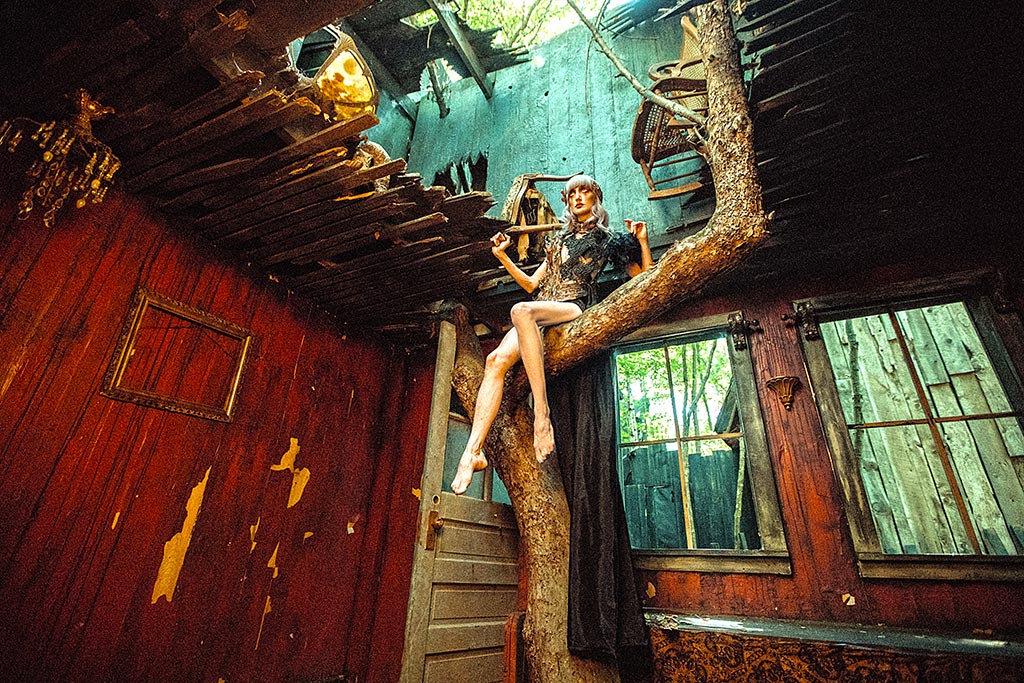
Taking off from the previous question, you have often described your images as stories with something happening “in the left, the middle and the right”. When you visualise it, how much of the background affects your narrative. How conscious are you of what you feel and what you wish to create?
Environment is everything. As humans we are constantly going in and out of environments, without choice, whether we like it or not. As fantastical as I like to contrive my imagery, it’s also important to me to balance on the fine line of reality, so the viewer can relate. Utilising a space poorly can be so detrimental. It is important to realise different angles, perspectives, and so on, while keeping the character and integrity of the location intact. Just throwing together furniture and not understanding why, makes the image less believable.
I typically try to learn the history of who lived there, and pair it with my own ideas. Every little thing has to be in place. From the main subject in the foreground to a flower vase way back in the corner, all of these together make up the character of the location, and I guess the story lies in the creation of the location’s character, which somehow parallels that of the human subject in the photograph.
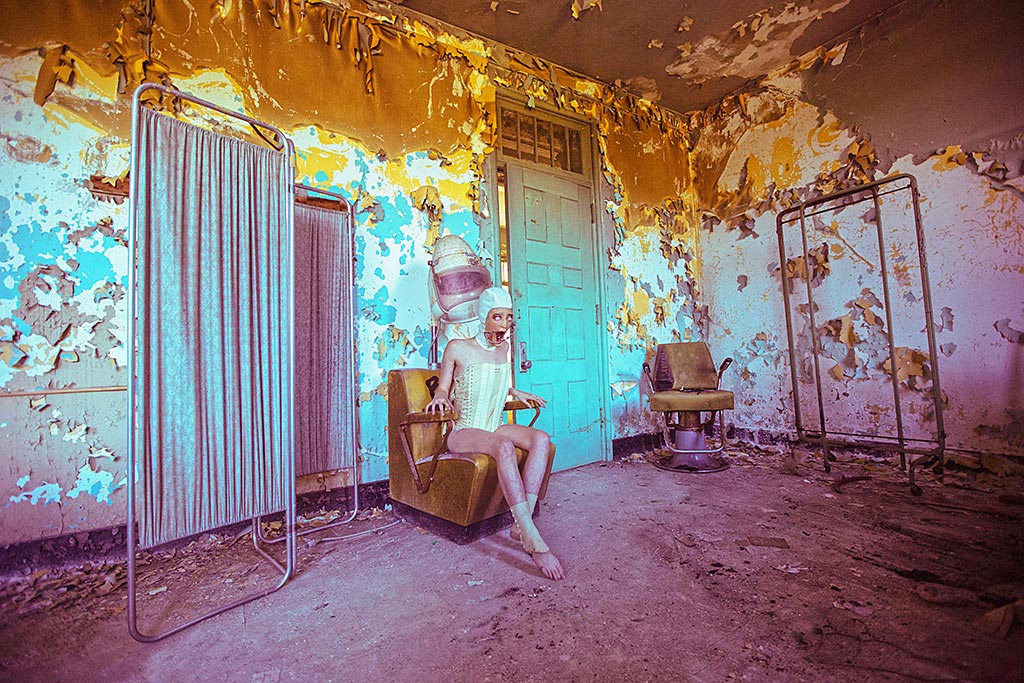
You talk about being arrested for shooting in abandoned buildings as the best thing that could have happened to you. And this, I imagine, is in retrospect. What changes for you when you look at an experience in retrospect as against a photograph? Are you able to see the things that specifically went into the photograph from the experience, or are you able to discern how it changed you and therefore how it affected your photograph?
I think sometimes the stress and weather (cold, hot, etc.) shows in the models I shoot, which adds to the emotional aspect. The sorrow of a place that once had family holidays now left in ruin. I’m confident that any of the models I’ve shot with have felt that and rolled with it. To me, it’s important to do justice to these locations. There are so many terrible people in the ‘urban exploration’ community who are territorial and destructive. To some, going to a place is just a trophy; another notch in their belt. To me, it’s the importance of catching a place as it is in history. How it is in the entire universe, for an eternity. Take some of the giant, beautiful asylums, for example. For maybe 100 years, they were in use. People roamed the halls. Billions of things happened there.
People lived and died. They were admitted and re-admitted. Then, you have this brief moment in time where no one is there, where the halls are barren and take on a life of their own. It is a blink in the eye of the universe that these locations are in this state – after they were almost their own living, breathing entity and right before they are gone forever. The risk is certainly worth the reward to me. Would you break the law to see the last of a species? To just get once glimpse before they are forever gone?
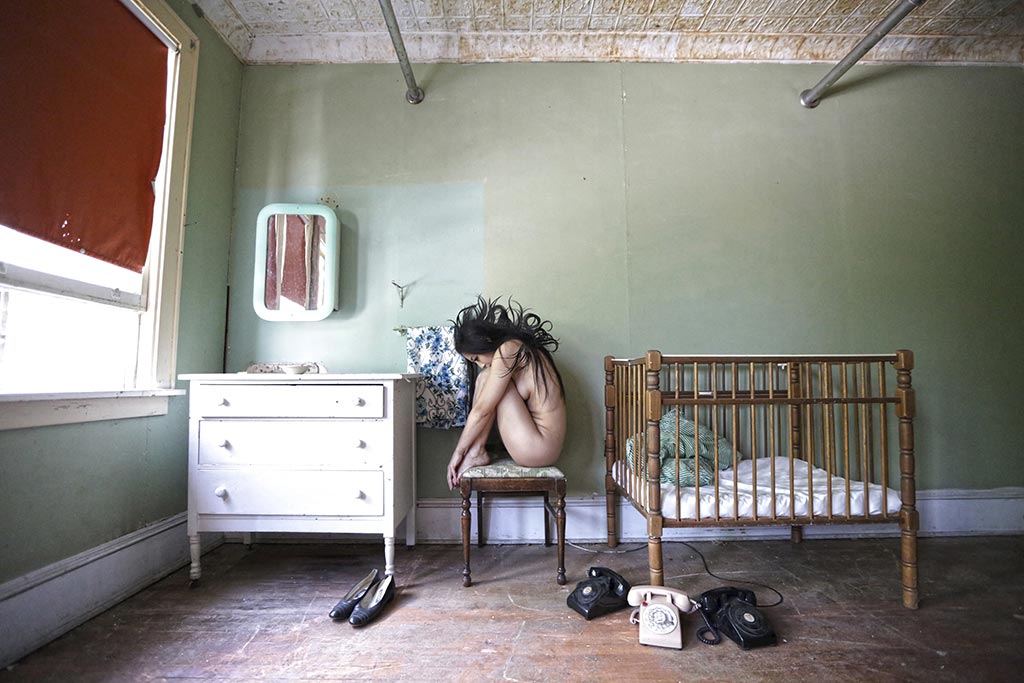
Once the image is created and shot, and you sit for post-production of the image, are you able to view it objectively for its craft and aesthetics without abandoning its emotion? What I mean is, are you able to separate yourself enough from your creation to be able to see that separateness and resist temptation from altering it?
I try to, and would say that I definitely make wrong decisions with editing from time to time. Admittedly, I am the LEAST technical photographer. I don’t use a ton of equipment (90 percent of the time I use available light) and I don’t know too much about Photoshop, so I typically do all my effects at the site of the shoot. I’ve learnt different tricks over the years to be able to do what I do with the least amount of digital manipulation.
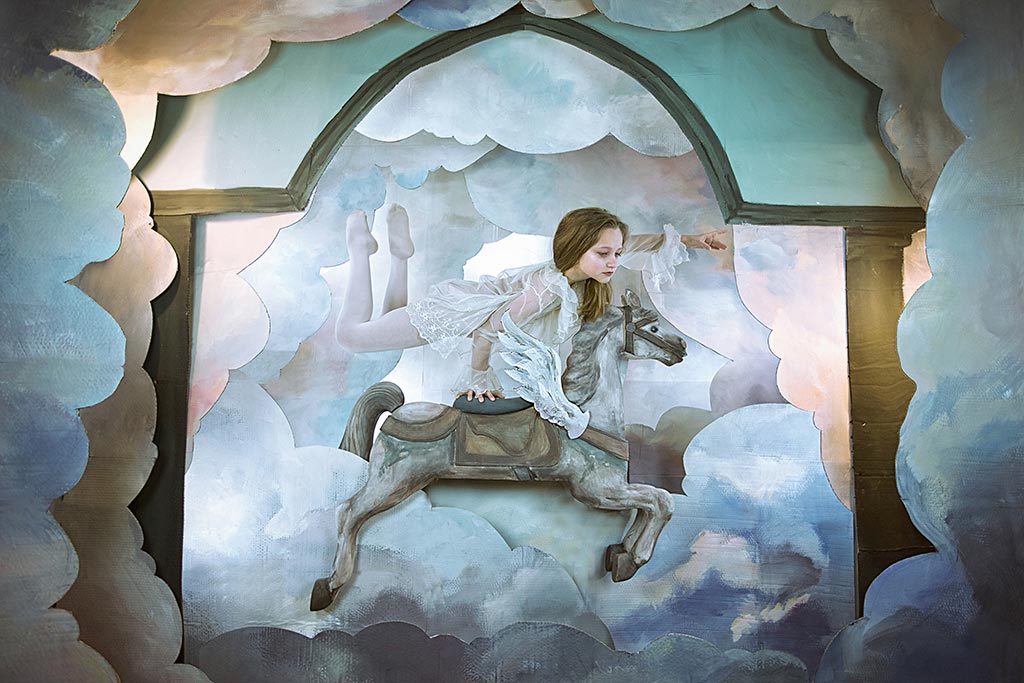
What do you think was harder to achieve for you as a photographer – creating something within an existing space, such as an abandoned building, or creating something new each time within the same space, as in your Colours series?
Definitely creating different scenes within the same space. It takes having to look at the same area over and over again, with much different intentions. To do that in such a confined space would sometimes prove difficult for me. I am currently working on another colour series, as well as a project with a painter in the same room (which is only about 7x7 feet) that is forcing me to go even farther beyond my thought process from the first time around. It’s a good brain exercise, if anything.
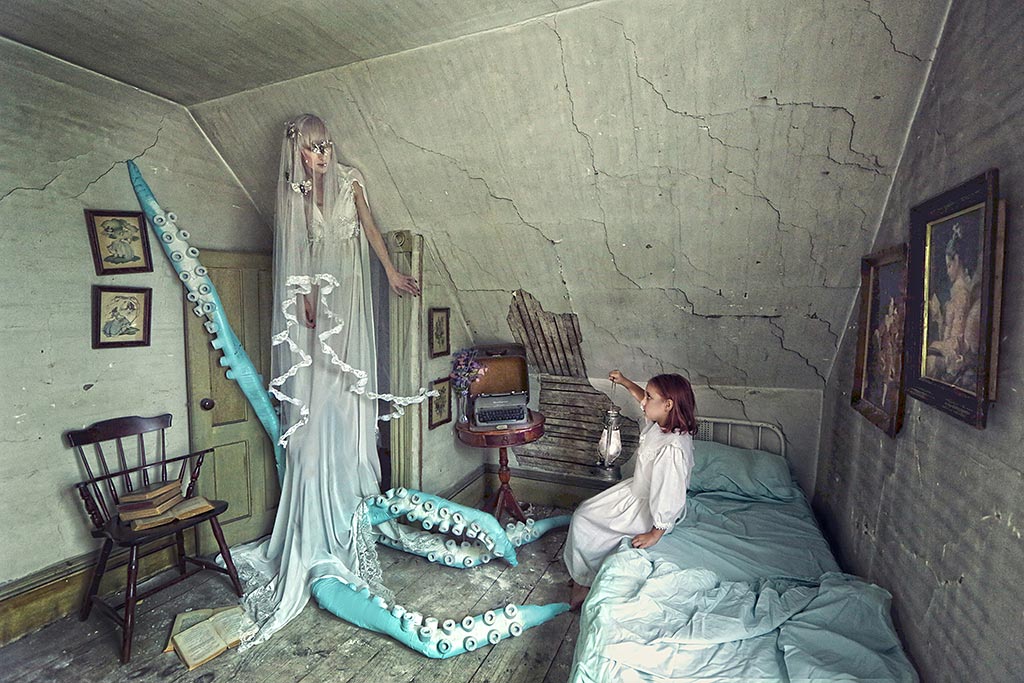
Do you think all art necessarily needs to have a purpose, or are they binary opposites too, with constantly shifting perspectives and blurring lines?
Not necessarily, although I believe art is either created to have a purpose, and sometimes the actual creating of the art – not the actual outcome – in and of itself has purpose. Every action we take, everything we create, it’s all on purpose. Even if it is accidental, at some point that initial action was born from purpose. And who are we, as individuals, to define what is purposeful in life, and what is not?
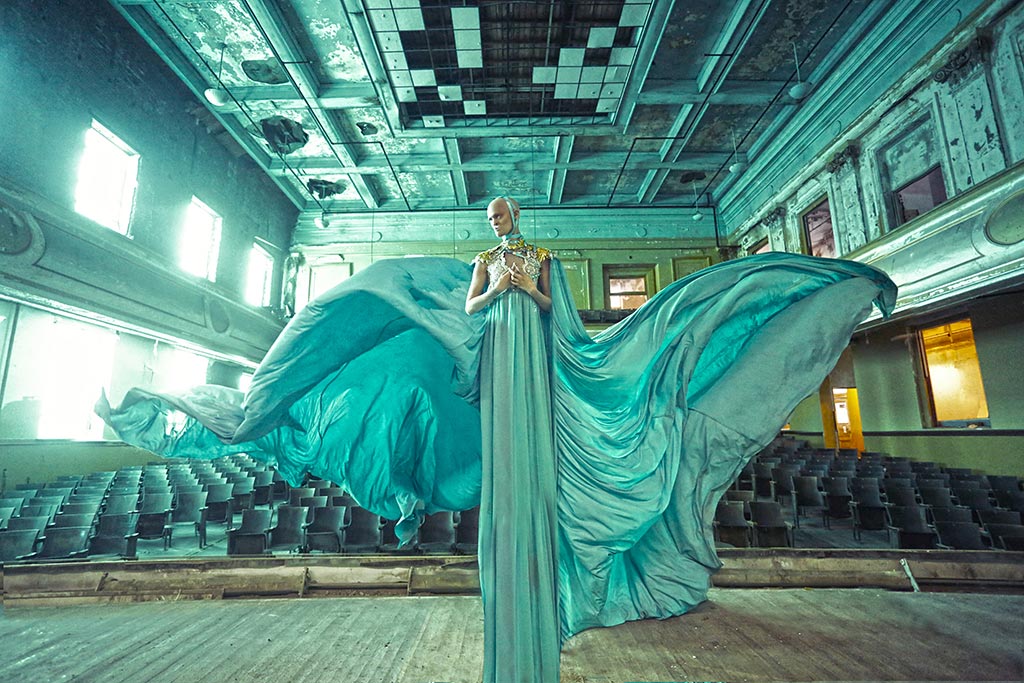
And, finally, if you had to create your own story as an image, is there a specific part you would naturally veer towards, maybe something that hasn’t yet found its way into your photographs already created? Or are we back to binary opposites?
The past few years have been a real spiritual journey for me, internally and externally driven. I’ve learnt so much about myself and the world, but am just aching to learn more and to be happier/meet like-minded, good people. I would probably do a photo outside, at dusk, maybe with someone’s chest glowing and floating up into the sky. There’s so much out there to be seen, and to give ourselves, too. I was in this abandoned house once, and happened to open up a random book. Inscribed on the inside cover were the words ‘We are a part of all we have met’. It was the most important thing I ever read. I was in such a dark place at the time, and I guess you could say it saved me in a way.
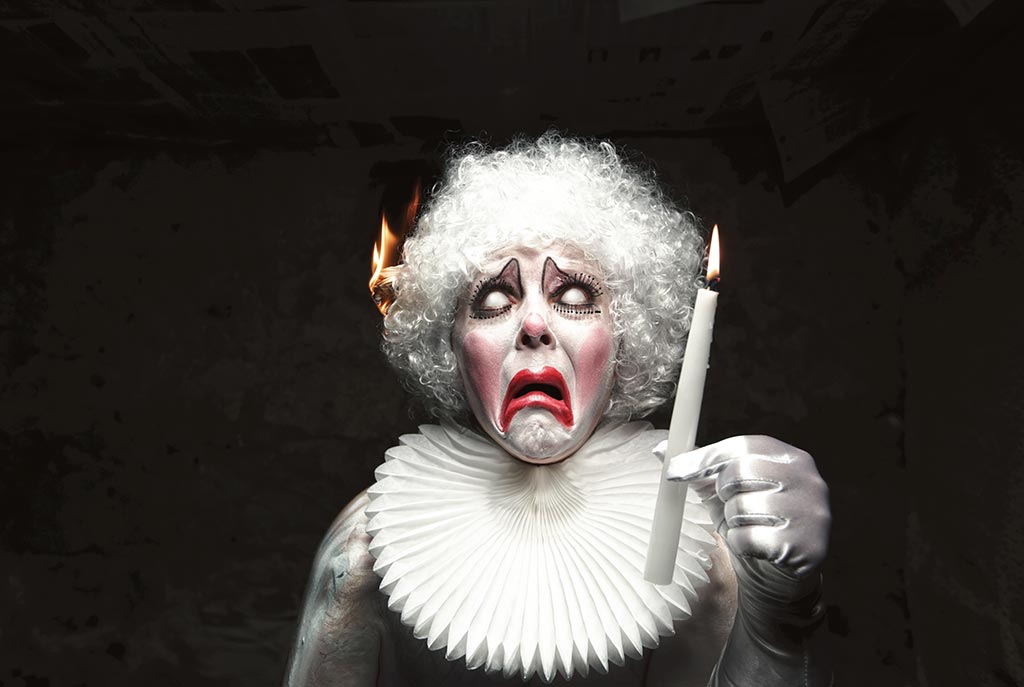
All Images courtesy of Karen Jerzyk.
Share